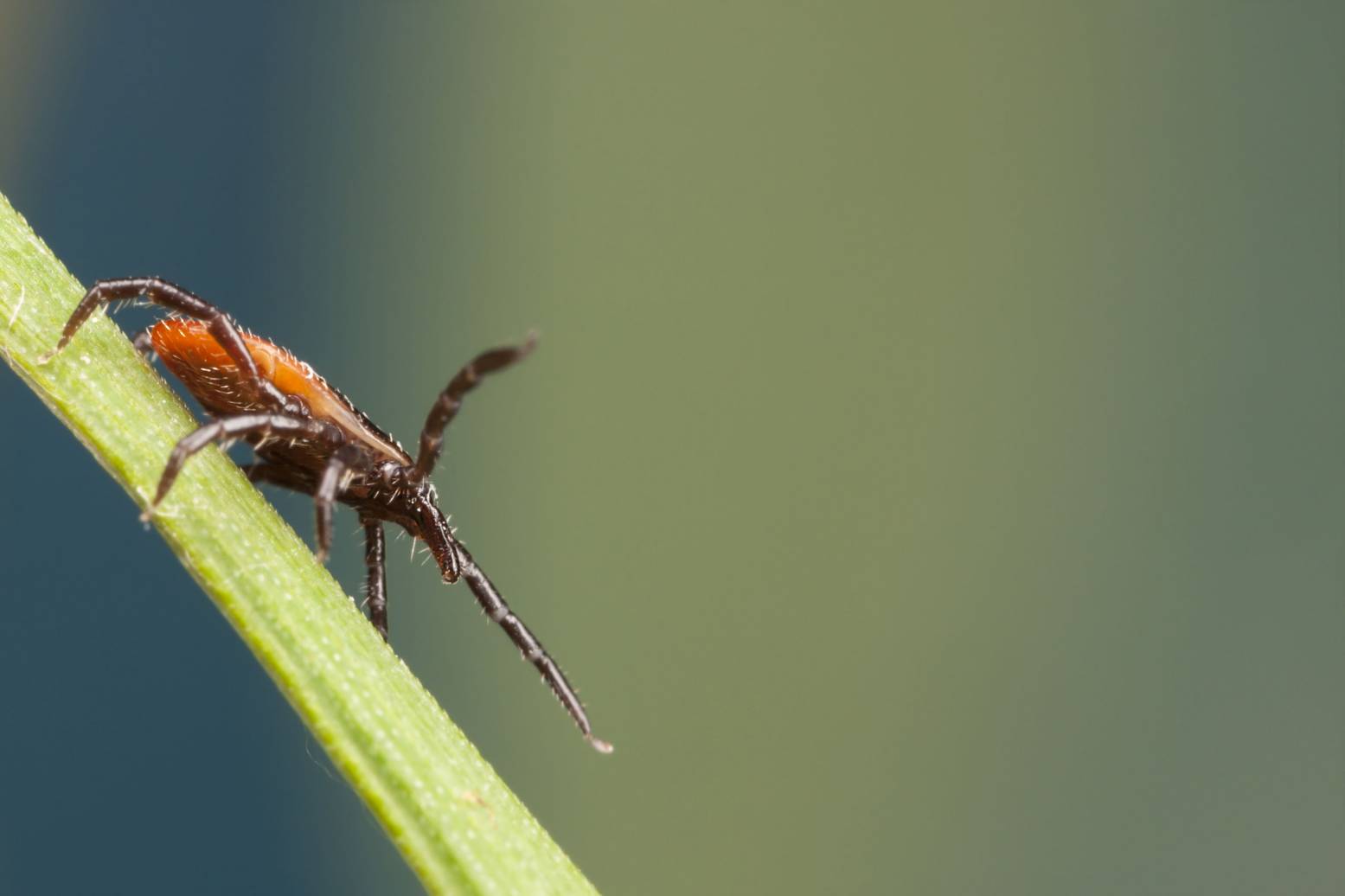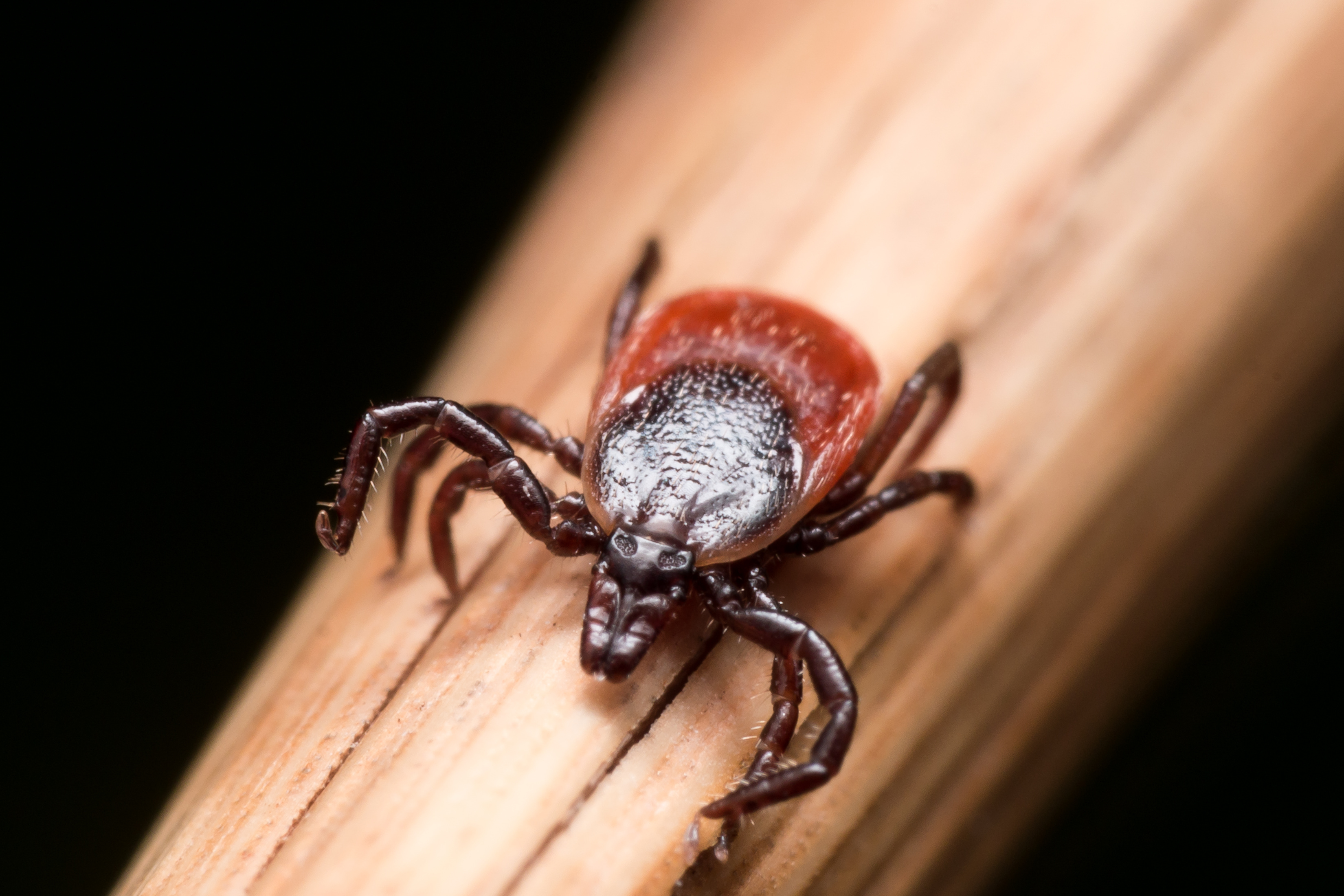What you need to know about ticks

What do ticks look like?
Ticks are typically small external parasites (ectoparasites), around 0.5 to 15mm in size.1 Recently hatched ticks (i.e. larvae) are extremely small and difficult to see, no bigger than a speck of dirt.2 Adult ticks are often bigger, sometimes the size of a coffee bean after feeding.2
When a tick finds a feeding spot on the skin, it grasps and cuts into the surface. The tick then inserts its feeding tube and feeds off the host's blood.3 They often attach themselves where the skin is thinner, such as on your ears, armpits, back of knees, elbows, groin and hair-line.2,3However, ticks can attach anywhere, so a full body check is recommended.2
Where ticks live
Ticks live near the ground in long grass and can be found both within or outside cities, in parks and gardens, as well as in forests and meadows.2 They cannot jump or fly, but attach themselves to the skin of animals or humans that brush against them.3 Outdoor activities therefore put people at risk of being bitten by a tick, for example: camping, walking, cycling, hiking, picnicking, climbing, fishing or jogging.4
Find out more about countries where you are at risk of being bitten by an infected tick
Will I know if I’ve been bitten by a tick?
You may not always notice that you have been bitten by a tick as a tick's saliva contains a natural anesthetic, which can stop you from being able to feel the bite.3 If you do find a tick on your body, follow these steps to remove a tick and regularly check yourself for symptoms of infection.
What diseases can ticks cause in humans?
Ticks do not cause disease by themselves. However, if a tick is infected, it can pass this infection on through a bite. Ticks, therefore, have the potential to cause diseases in humans which vary regionally, including diseases such as Lyme disease, Crimean-Congo hemorrhagic fever (CCHF) and tick-borne encephalitis (TBE).1
Tick repellent
Applying insect repellent containing DEET to exposed skin is one of the precautions that’s recommended to reduce your risk of being bitten by an infected tick. DEET is widely used to repel biting pests such as mosquitoes and ticks.5
Some insect repellents contain a chemical called permethrin, which kills ticks and other insects which come into contact with it. They can be sprayed onto clothing and camping gear.6It is important to follow the manufacturer's recommendations as insect repellents are not suitable for everyone.

Explore
How to remove a tick
Find out more about how to safely and effectively remove a tick should you find one on your body.

Find out more about tick-borne encephalitis
Do you know what tick-borne encephalitis is and why you might be at risk?

Find out more about what you can do
Find out more about ways to help to avoid tick bites and protect you against TBE infection, or speak to a pharmacist, doctor, nurse or healthcare professional for advice.